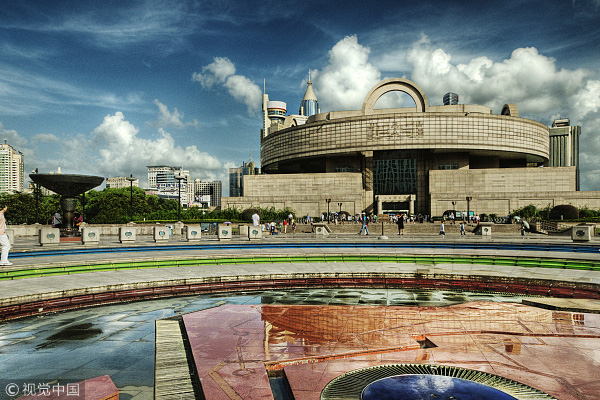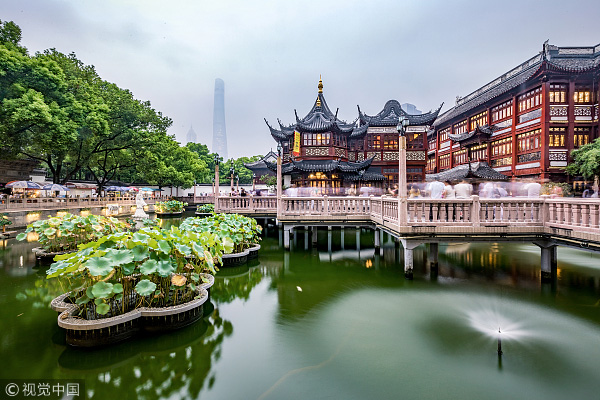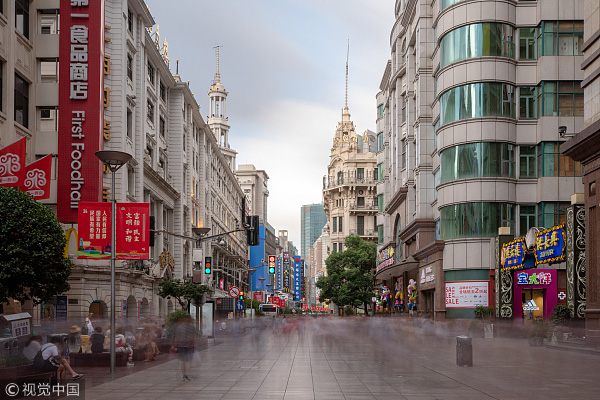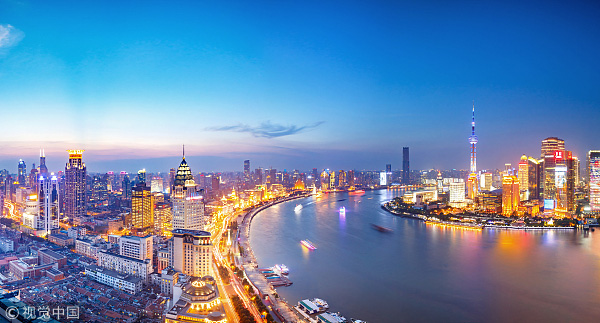A 6-day trip through Shanghai, Jiangsu and Zhejiang

Transit passengers from 51 countries including the US and Canada can spend up to 144 hours in Shanghai Municipality, Zhejiang and Jiangsu provinces without a visa. This visa-free policy allow foreigners from these 51 countries with visas and plane tickets to a third country to transit through Shanghai, Nanjing, or Hangzhou for a visa-free stay of up to 144 hours.
Shanghai, Zhejiang and Jiangsu, located in eastern China, all feature strong economies, long histories, and beautiful natural and cultural landscapes that are worthy to tour around. Here's a suggested itinerary for a six-day trip starting from Shanghai and ending in Hangzhou packed with can't miss highlights.
Day 1: Must-see scenic spots in Shanghai
Several scenic spots are must-see if you visit Shanghai for the first time.
In the morning you can visit the Shanghai Museum. It is not only one of the four major museums in China, but also a public undertaking devoted to the preservation, education, and scientific research of Chinese ancient cultural works of art.
Built in 1952 and covering an area of 12,000 square meters, the museum collects and displays more than 1.02 million cultural relics, including 140,000 precious ones of bronze ware, chinaware, calligraphy, painting, jade ware, and royal seals.

Shanghai Museum. [Photo/VCG]
The Shanghai City God Temple is a must-go destination if you are interested in Taoism and Chinese religious culture. Known as one of the "three famous temples along the Yangtze River," its history spans more than 600 years.
The construction of the temple began during the Three Kingdoms Period (220-280), and it was turned into the City God Temple during the reign of Emperor Yongle (1403-1424) of the Ming Dynasty. A memorial archway built in 1535 and a stage constructed in 1865 still stand.
The temple also features traditional Chinese performances, such as the acrobatics performances.

City God Temple. [Photo/VCG]
At noon, you can go to the temple market to taste all kinds of Shanghai delicacies, including spiced beans, roasted chestnuts, pear syrup candy, traditional Chinese rice pudding, glutinous rice balls and noodles. Additionally, there are also many shops selling trinkets with Chinese characteristics.
Following lunch, stop by Yu Garden, or Yuyuan Garden. Located near the City God Temple and the temple market, the classic garden is reputed to be the most beautiful garden in Shanghai where it is enjoys the fame of being a "City Forest."
Covering an area of more than two hectares, Yuyuan Garden was first built in the Ming Dynasty (1368-1644) and is rated as a State-level major cultural relic preservation site.
As a landmark for culture, shopping and services in the city, Yuyuan Garden not only boasts stunning scenery but also time-honored restaurants, such as the Nanxiang Bun Shop, a popular Nanxiang xiaolongbao restaurant in the area.
Nanxiang xiaolongbao, or Nanxiang steamed bun, is a traditional snack in the Jiading's Nanxiang town of Shanghai, featuring thin skin, tender meat and juicy fillings. It has a history of more than a century, originating during the reign of Emperor Tongzhi of the Qing Dynasty (1644-1911).

Yuyuan Garden. [Photo/VCG]
Next stop is Nanjing Road. Known as the No. 1 Street in China, Nanjing Road is one of the leading business centers in Shanghai and has been an epicenter for the city's history and culture for more than a century.
From the Bund at the east end to Jing'an Temple at the west end, Shanghai's rich history lives on Nanjing Road with a mix of modern and old buildings standing along both sides. It was originally named Yongquan, the spring in front of Jing'an Temple.
The 1,033-meter-long Pedestrian Walkway of Nanjing Road houses some of China's key commercial shops like Shanghai No 1 Department Store, Yong'an Commercial Building, Lao Feng Xiang Gold & Jewelry Shop, and Maochang Optical Shop.
There are also many grand old restaurants and famous traditional Chinese cuisine on the road, such as Yanyunlou Restaurant, which specializes in Beijing dishes, and Shendacheng Restaurant, which serves traditional Chinese dim sum. Visitors will have no shortage of dinner options.

Pedestrian Walkway of Nanjing Road. [Photo/VCG]
At night, the spectacular night view from the Bund is a can't miss. The famous waterfront of the Huangpu River total 1,500 meters and boasts stunning views of Shanghai's iconic skyline. With a plethora of disparate entities, from high end restaurants to financial buildings, the area has won myriad titles, like the "Far-East Wall Street".
The Bund boasts stunning structures with different architectural styles including Gothic, Baroque, Romanesque, Classicism and the Renaissance that were constructed at different times in the city's history but still stay in harmony with each other. There is a saying in the city that goes, "the story of the Shanghai Bund is the story of Shanghai".
You can take a cruise ship from Shiliupu Wharf and enjoy breathtaking night views of the Bund. The tour lasts for about one and a half hours. Remember to keep warm for the river breeze may be chilly.

The Bund. [Photo/VCG]
If you to want to overlook the magnificent night view of the Bund, you can climb up the Oriental Pearl Radio & Television Tower, which is located on the other side of the Huangpu River, and watch it through its glass-bottom walkway located 263 meters above ground.
You can cross the river through the cross-Huangpu River ferry or the Bund Sightseeing Tunnel.
MOST POPULAR
- 1 China to continue opening up its mega-market to world: premier
- 2 Policies concerning expats, foreign enterprises in November 2025
- 3 China to enhance convenience for inbound tourism: minister
- 4 Departure tax refund applications surge 285% as inbound tourism rebounds
- 5 China's foreign trade up 3.6% in first 11 months of 2025







